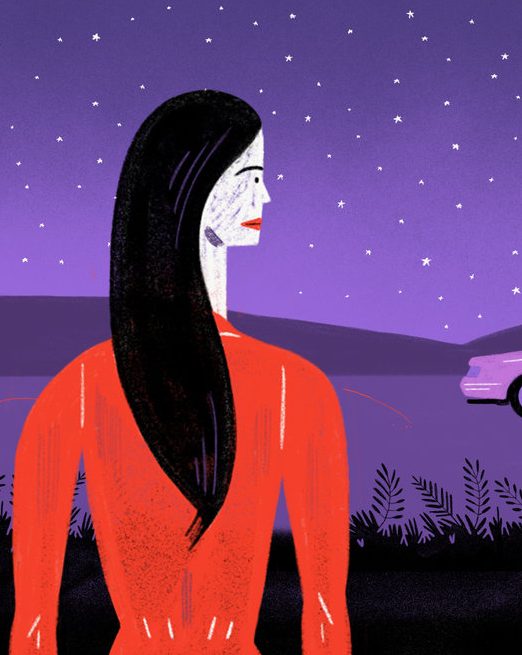
Places Chelsea Hodson Has Imagined Herself:
“The tops of cliffs”
“A flooded canyon”
“An island where former versions of [herself] gallop around on all fours”
When I read an essay, I’m often on a self-interested adventure away from myself. In order to investigate some private question of mine—or maybe just for fun—I want to ramble through other thoughts, other places, other times. But because essay-reading mostly happens in my head, I’m also on a self-contained adventure away from myself. All my readerly rambling never actually breaks loose from my own mind. Lately I’ve been looking for writers who make the most of that paradox, of the vast and multiplex universe that language reveals in our self-bound experiences. Chelsea Hodson is one of those writers.
In her new book of essays, Tonight I’m Someone Else, Hodson contemplates first-person engagement with distant possibilities in ways both mundane and sublime. On using a treadmill with a video screen, she writes: “Running outside is real, but what I want is the less real: I want the path unfolding on a screen in front of me, I want to run through a place I’ve never been.” Even while considering the most monotonous, solitary chore, she regards possibilities for something dreamily different.
I was struggling to eat a baguette in a Brooklyn café when Hodson sat down to talk to me about her new book. Its essays are everything my baguette-consumption wasn’t: precise about the most mysterious things, cool, and thoughtfully exploratory. They take the reader through Hodson’s work for a NASA Mars mission, her involvement in Marina Abramović’s Generator exhibition, and her wide-ranging encounters with peril from Arizona to New York. From the title on, Tonight I’m Someone Else draws upon a concentrated attention to self that leads continually toward something new.
—Adam Colman
I. Just a Feeling
THE BELIEVER: I found this recurring idea in Tonight I’m Someone Else of getting beyond the self even while self-focusing. How did you go about coming up with that?
CHELSEA HODSON: At a certain point I just noticed that I was really interested in writing and documenting moments of intensity. That seemed to be coming from a death drive, or a self-destructive tendency, testing boundaries in sometimes dangerous ways. Those are what stuck out in my mind as formative moments, maybe. That’s where I started leaning into it.
BLVR: Did you always have an interest in the death drive before reading Freud—did you just intuit “death drive”?
CH: I think from a very young age, I’ve been drawn to people who were dangerous. I was drawn to the bad girl who had seen all the R-rated movies at age twelve and could tell...
You have reached your article limit
Sign up for a digital subscription and continue reading all new issues, plus our entire archives, for just $1.50/month.
Already a subscriber? Sign in




